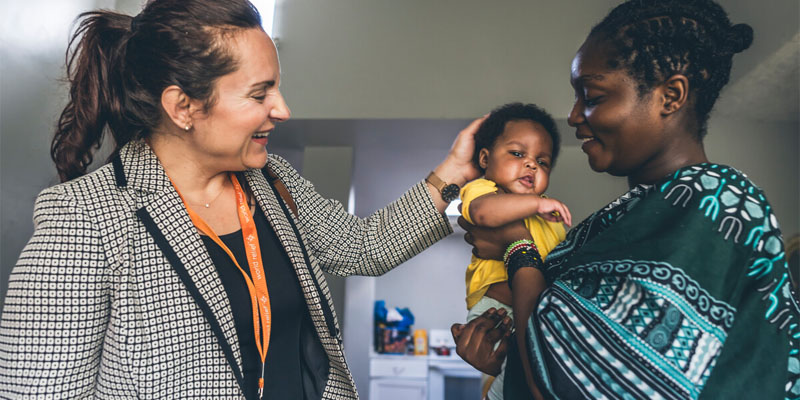On Saturday, April 15, heavy fighting broke out between two military forces – the Sudan Armed Forces (SAF) and the Rapid Support Forces (RSF). While the fighting started in Khartoum, Sudan’s capital city, it has since spread throughout the country causing food, fuel and water shortages in some areas.
In a recent email update, World Relief Sudan Country Director Josh Meares said, “It has been a difficult time since my last update! I hope you and your families are safe. Sudan has never been in a situation as devastating as this current war in our lifetimes. The entire country is suffering. No one knows what will happen next.”
Below is an update on what’s happening in Sudan.
The Latest Update
In July, Sudan entered its 100th day of war as mediation attempts continue to fail. The conflict continues to evolve across the country, creating unique vulnerabilities for people in places like Darfur.
The UN estimates that over 4,000 people have lost their lives in the conflict, but many think that the true number is actually much higher than this.
Currently, over 80% of our in-country staff are displaced, many have become refugees in Chad while others are living in IDP camps or with relatives. Many of our offices closed or hibernated due to security threats during the first months of the conflict, but as the situation has evolved and our staff have learned to operate under the new challenges, we have slowly begun to reopen offices where possible.
While humanitarian activities are still greatly impacted compared to the pre-conflict levels, some have resumed under the new challenging realities brought on by the ongoing insecurity. While much of this work is funded and led by large international actors such as the UN and USAID, humanitarian organizations like World Relief play a key role in continuing to implement these activities on the ground.
What Is World Relief Doing To Help?
In early August, World Relief helped carry out the first distribution of food in West Darfur since mid-April. This distribution reached over 12,000 people with food provided by the World Food Programme. Additionally, World Relief staff have continued to operate primary healthcare centers in Central Darfur as the situation and supplies allow and plan to continue providing aid in the forms of health, WASH, and shelter in both states. In the Blue Nile state in the eastern part of the country, World Relief continues to implement programs assisting small farmers to produce their own food.
As you might recall, World Relief recently opened its newest office in Chad. The location of our office there puts us in close proximity to Sudanese refugees who are fleeing. An emergency response team composed of World Relief staff from around the world arrived in Chad on June 12th, 2023 to support World Relief’s Chad office in a cross-border refugee response.
Why Does Responding To This Conflict Matter To Me and World Relief?
Sudan has long been a crossroads between the Middle East and Africa. Though rich in cultures and resources, decades of colonization, civil conflict and climate disasters have made Sudan one of the most vulnerable countries on earth.
Prior to this most recent conflict, 3 million people were already living as internally displaced in Sudan, and 15 million were at risk of acute food insecurity. The return to conflict is likely to exacerbate an already difficult situation for people experiencing the greatest vulnerability.
World Relief has been on the ground in Sudan, working to address these problems since 2004. Outside the U.S., Sudan is our largest country of operation with more than 345 staff who are committed to building flourishing communities and moving lasting change forward.
In 2022 alone, the team reached more than 533,000 men, women and children in Sudan with life-transforming resources, training and care.
It Matters To Our U.S. Community Too
Not only does World Relief work in Sudan, but we have a rich history of welcoming refugees from Sudan to communities across the United States.
You may remember reading about people like Darelsalam who came to the U.S. when she was 14-years-old, or Ibrahim who arrived in North Carolina after being separated from his family for 10 years.
Over the years, World Relief has welcomed more than 2,000 Sudanese refugees to the U.S. — this number includes people from both Sudan and South Sudan, which gained independence in 2011 — and we currently have many Sudanese staff who work across our U.S. offices.
Much like the conflict in Ukraine, our connections in Sudan stretch across oceans, reminding us that the lives we live and challenges we face are deeply connected and inextricably linked. We are grateful for the ways you have joined us in praying for Sudan and ask you to continue praying in the midst of a situation that is changing daily.
*This blog was last updated on August 16th, 2023.

